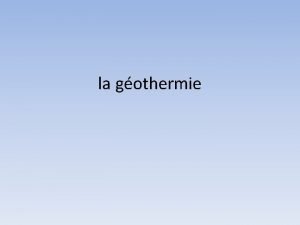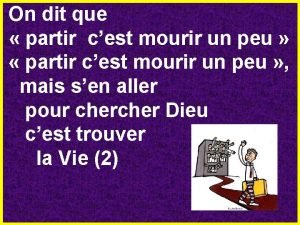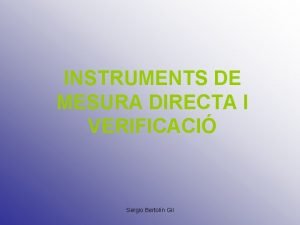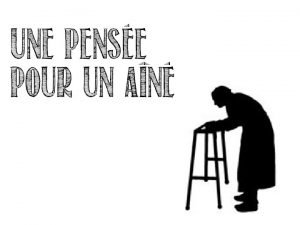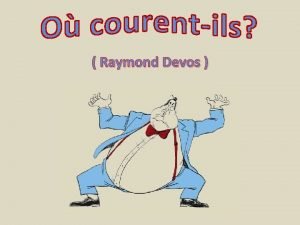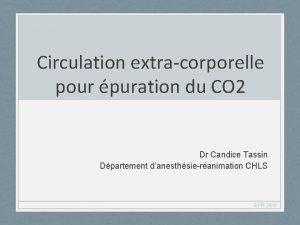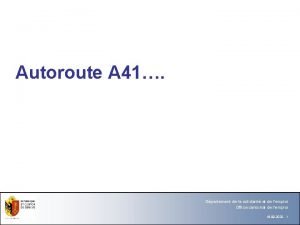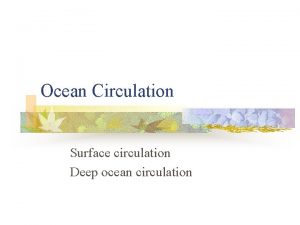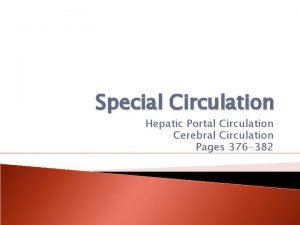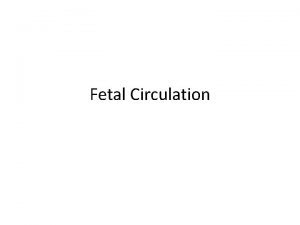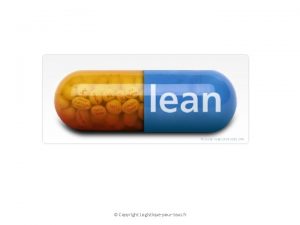Circulation ExtraCorporelle Un peu dhistoire Alexandre Ouattara Dpartement









- Slides: 9

Circulation Extra-Corporelle Un peu d’histoire… Alexandre Ouattara Département d’Anesthésie-Réanimation, GH Pitié-Salpêtrière, Paris, France

• Cœur exsangue et immobile • Diminution de la consommation myocardique en O 2

« Hypothermie » Dispositif « cœur-poumon artificielle »

Hypothermie • 1798. Dr J. Curie. Hypothermie (lutte fièvre) par immersion dans eau glacée) induit bradycardie. • IIème Guerre mondiale. Hypothermie induit TDR puis arrêt cardiaque • IIème Guerre mondiale. Dr W. Bigelow. (ministère de la guerre canadienne). Animaux homéothermes. Couverture hypothermique (18°C). Hypothermie VO 2 • 1950. Dr I. Boerema (hollandais). Circuit hypothermique (AFVF) 10°C. • 1952. Dr F. J Lewis. Chirurgie cardiaque (CIA) sous hypothermie de surface (bain froid). Hypothermie à 27°C. Arrêt cardiaque (clampages Ao et VC) pendant 10 min. Reprise d’une activité cardiaque.

Limites hypothermie • Chirurgie aveugle • Troubles du rythme (hypothermie profonde) • Limite à 28 -30° • Temps limité d’intervention (10 min)

La machine cœur-poumon artificielle (1) • 1812. C. Legallois (Physiologiste) « Si l’on pouvait suppléer le cœur par une sorte d’injection et si en même temps, on avait pour fournir à l’injection d’une manière continue une provision de sang artériel soit naturel, soit artificiel, on parviendrait à entretenir la vie indéfiniment… » • Début XXème siècle. Lindbergh « Lindbergh Pump » (cœur artificiel) • 1935. John Gibbon. Idée d’un dispositif « cœur-poumon artificiel» • 1937. John Gibbon. Dispositif « CPA» (chat) • Mars 1953. John Gibbon. 1 er malade (CIA) opéré avec dispositif « CPA» . Décès du patient. • Mai 1953. Premier succès du dispositif « CPA »

La machine cœur-poumon artificielle (2) • 1955. John Kirklin (Mayo Clinic, Rochester). Séries d’opération intra-cardiaques avec le dispositif CPA de Gibbon. • 1953. Dr Walton Lillehei et Dr Richard De Wall. Oxygénation par barbotage • 1955 Dispositf « CPA » de Wall (Dr W. Lillehei et R. Wall) pompe à doigts multiples et oxygénateur à barbotage • 1955. Melrose. Injection de potassium comme agent d’arrêt cardiaque • 1956. Oxygénateur à usage unique

Les limites • Protection médiocre • Reprise d’activité aléatoire

Machine cœur-poumon artificielle avec hypothermie (1958 -1959) • Meilleure tolérance myocardique • Echangeur thermique (refroidissement et réchauffement)




